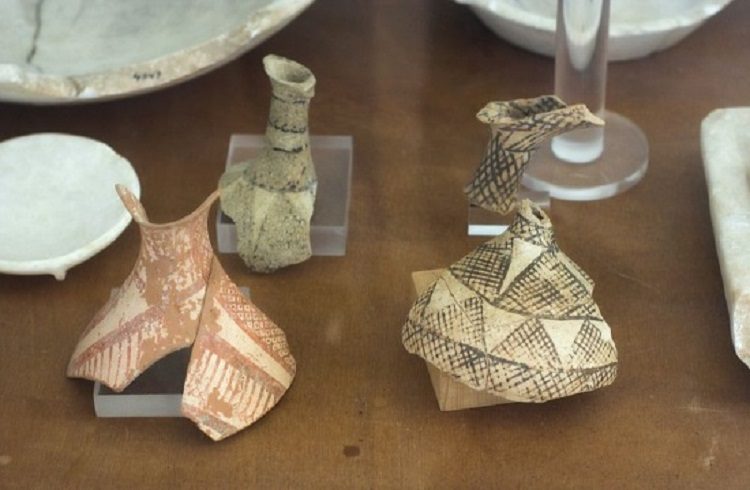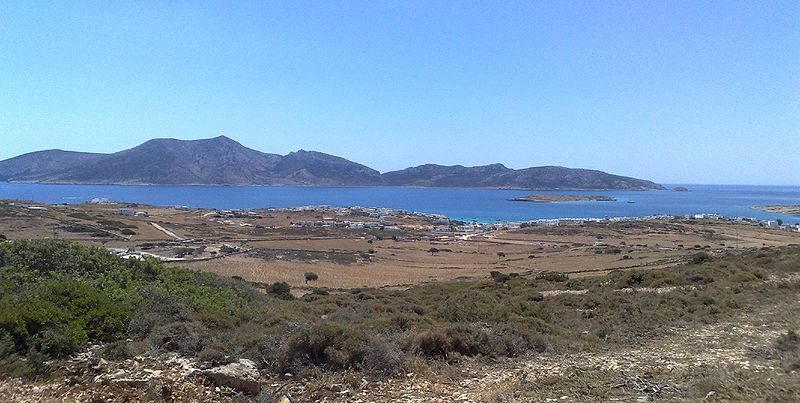
The sanctuary dates back to about 3000 BC, in the Bronze Age, and Sir Renfrew describes it as "the world's earliest maritime sanctuary".
The latest finding is a staircase that connected the Kavos mount with Daskalio, a rocky islet just offshore, before the strip of land that connects the two spots sank in the water.
The island is located between the Greek islands of Naxos and Santorini that also played an important role during the Bronze Age, and according to a Times article, the new findings are as old as the Pyramids.
Thousands of fragmented parts of cycladic figurines as well as marble basins and unusual pottery for drinking wine, all used as ritual offerings, were also located in this stony, scrub-covered hillside.
Archaelogists were most impressed discovering that no whole figurine has been found or parts that 'fit' together, meaning that the parts arrived to Kavos already fragmented. Furthermore, none of the over 500 figurine parts or of the 2,500 strange parts of marble basins have not found its other part in any cycladic object found elsewhere.
"It appears that there was a kind of obligation to bring a piece of the broken figurine and deposit it on the sacred island of Keros, possibly by staying a few days in Dhaskalio during the completion of the ceremony," Professor Renfrew revealed to The Times back in 2011.
In 2008, the remnants of a 16m-long stone sanctuary dated between 2,500 and 2,400 BC were unearthed while there are also indications that the sanctuary was abandoned around 2000 BC.
Sir Renfrew described it as the largest known building of Early-Cycladic Period which has the most spectacular public architecture in Cyclades to be found nowhere else in the wider region of the Aegean Sea
According to him, the site was the most important ritual center in the Cyclades in the middle of the Aegean ince the beginning of the 3rd millennium BC, undoubtedly 500 years earlier that any other ceremonial center in the prehistoric Aegean.The style of the pottery indicates that the ritual offerings were mainly between 2750 and 2550 BC, with a gradual decrease in the next half century while the recently discovered staircase also indicates ritual activity.
"The importance of the Keros sanctuary as the first important religious center in the Aegean Bronze Age is reinforced by new findings in the structure on Dhaskalio," the British Professor noted adding that "the main ritual offerings of broken marble figurines and vases and ceramic drinking vessels were on the mount Kavos on Keros, without being accompanied by impressive structures or a large building complex...the design and monumental characteristics are now beginning to be understood."




Reader Comments
to our Newsletter